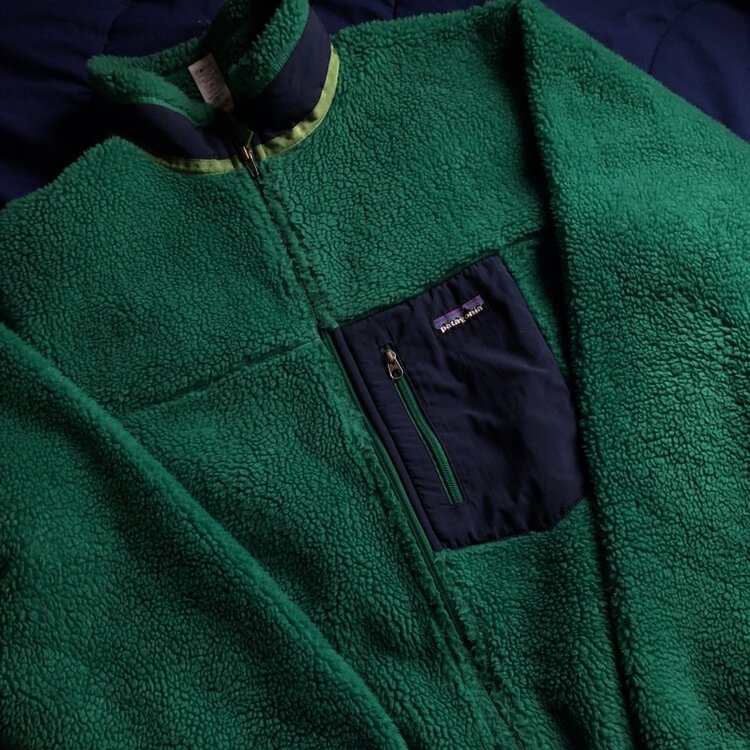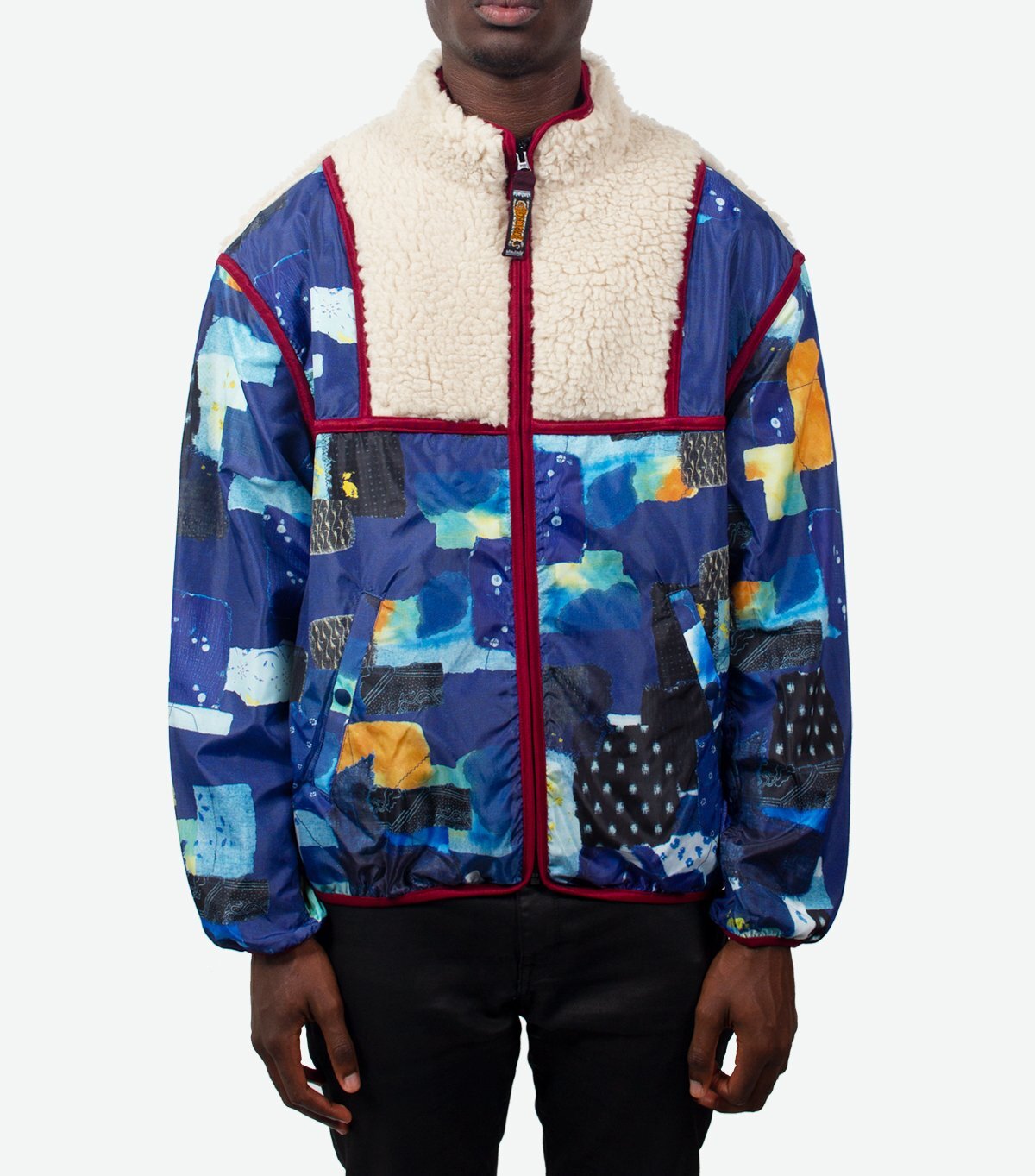Fleece Five Ways
Riding the momentum of 90’s nostalgia and “cozy-core,” fleece finds itself in the crosshairs of just about every fashion tribe and movement today. But this wasn’t always the case. Once the embodiment of no-nonsense practicality in outdoor exploration, fleece has since ridden the fashion carousel, bobbing up and down through several decades’ worth of trends. We’ve welcomed its resurgence into the spotlight with open arms, but how did fleece make its way from the sleepy suburbs to the catwalk?
Fleece checks three important boxes: interesting texture, color-blocking, and versatility. The fuzzy sherpa material of thicker pieces can spice up a (literally) flat outfit and give off a visible warmth that enhances an outfit in colder seasons. Slivers of color pop against the garment’s neutral body, making interesting color combinations. But perhaps most importantly, fleece fits nicely in a variety of aesthetics, from “Japanese Hiker” to grunge. This is made possible by playing with the individual parts of the garment while keeping the blueprint intact. As a testament to its versatility, here’s fleece five different ways.
The Original
Patagonia founder Yvon Chouinard is credited with creating the first synthetic fleece jacket, and Patagonia’s fleece offerings are best represented by its two most iconic offerings: the Synchilla and Retro-X. Both models exemplify the values of simplicity and excellence in execution.
The Synchilla features snap buttons that run from the top of the mock neck down to the mid-chest. It’s light enough to serve as either an intermediate layer or outerwear. Although the piece is relatively basic, subtle details like the pocket flap make it unique. The Synchilla also comes in a wide array of color combinations, as well as a few prints, making it a potential statement piece.



The Retro-X is the Synchilla’s beefier cousin. It’s a full zip jacket with a thicker pile, windproof lining, and spade-shaped pocket patch. True to its name, the Retro-X is the perfect complement to other vintage garments like light wash jeans, wider trousers, vintage t-shirts, and classic sneakers.



The Out-There
In Japan, vintage Patagonia and The North Face gear and jackets are far from rare. Infatuation with American outdoors culture gave birth to a love of classic fleece garments like the Retro-X. Japanese high fashion brands like Kapital, Needles, and Visvim have taken this to the next level, putting their own spins on their fleece jackets.
A brand known for careful attention to detail, Kapital pulls out all the stops when it comes to their fleece. The most striking feature of Kapital’s “Damask” fleece is the blue floral print that blankets the jacket, but smaller details like the patterned collar band and tiger zipper make it clear that fleece is no longer just another component of the suburban uniform.



The Basic
On the opposite end of the spectrum, Needles embraces fleece’s vanilla connotation. Their fleece track jacket strips the garment down to its bare necessities, keeping only shape, structure, and material. Though far from complex, each element is crafted at the highest level of quality to create a jacket built to last.


The Subtle
Visvim lies somewhere in the middle. Instead of flora, tigers, and prints (oh my!), their fleece bomber jacket sets itself apart by applying sherpa texture to a jacket typically composed of smooth materials like satin, cotton, or polyester. Whereas a more traditional bomber might feel out of place in a slouchier aesthetic, this one fits right in. Lastly, the return to a two-tone color scheme pays homage to Patagonia’s Retro-X to give the bomber a classic look.



The Ubiquitous
Fleece teddy jackets have quickly become a staple on college campuses. While unstructured shoulders, a cozy interior, and effortless aesthetic make these teddy jackets a safe go-to, some have taken the garment in a more experimental direction.
The Max Mara Teddy Bear Coat, for example, extends the length and plays with color, giving the jacket weight and drape that add a touch of formality, while exploring some nontraditional color palettes.


Environmental Impact
Although fleece can be a great addition to your wardrobe, it’s important to take into consideration that its polyester material is derived from non-renewable resources. There are, however, fleece jackets made from eco-fleece, or recycled polyester. That being said, the only truly sustainable form of manufacturing is not manufacturing anything at all. There are plenty of beautiful fleece jackets on the secondhand market. Depop, eBay, Etsy, and your local thrift stores will all have strong selections. Even better, Patagonia’s Worn Wear program takes well-worn garments that were destined for the dumpster, repairs them, and sells these refurbished pieces at a discounted rate.
The one seemingly inescapable downside of fleece is the release of microfibres upon washing. Their small size makes these microfibres especially dangerous. Though not a complete solution, adopting a philosophy of less is more is important not only for fleece, but for your wardrobe in general.
Words by Kyle Tang
